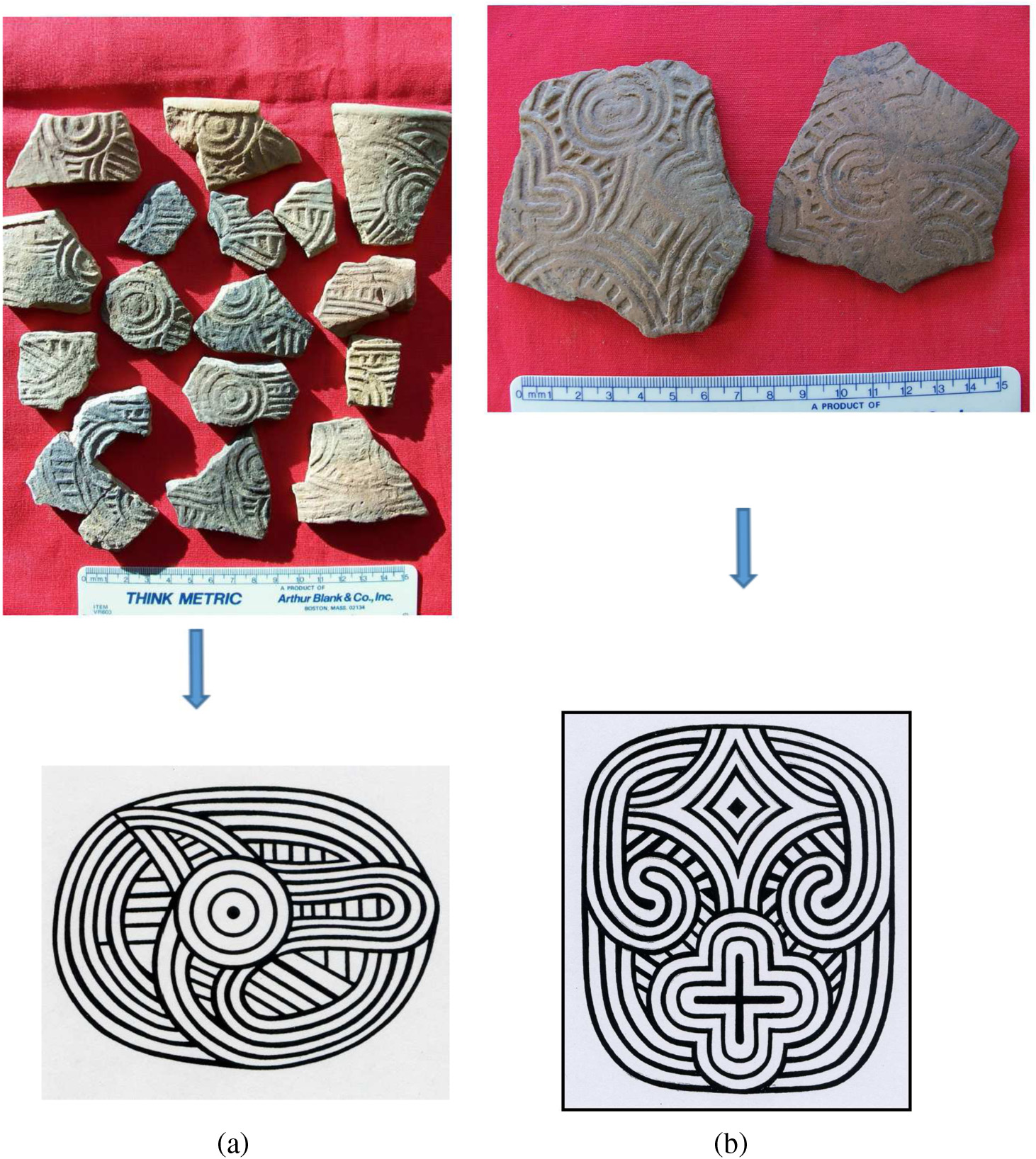Identifying Designs from Incomplete, Fragmented Cultural Heritage Objects by Curve-Pattern Matching Jun Zhou, Haozhou Yu, Karen Smith, Colin Wilder, Hongkai Yu, Song Wang


Introduction
The study of cultural heritage objects with embellished realistic and abstract designs made up of connected and intertwined curves crosscuts a number of related disciplines, including archaeology, art history, and heritage management. However, many objects, such as pottery sherds found in the archaeological record, are fragmentary, making the underlying complete designs unknowable at the scale of the sherd fragment. The challenge to reconstruct and study complete designs is stymied because (1) most fragmentary cultural heritage objects contain only a small portion of the underlying full design, (2) in the case of a stamping application, the same design may be applied multiple times with spatial overlap on one object, and (3) curve patterns detected on an object are usually incomplete and noisy. As a result, traditional curve-pattern matching algorithms, such as Chamfer matching, may perform poorly in identifying the underlying design. We develop a new partial-to-global curve matching algorithm to address these challenges and better identify the full design from a fragmented cultural heritage object. Specifically, we develop the algorithm to identify the designs of the carved wooden paddles of the Southeastern Woodlands from unearthed pottery sherds. A set of pottery sherds, curated at Georgia Southern University, are used to test the proposed algorithm, with promising results.
Paper
PDF ,
Grants
This research was supported by the National Center for Preservation Technology and Training Grants Program (P16AP00373) and University of South Carolina Social Sci- ences Grant Program.